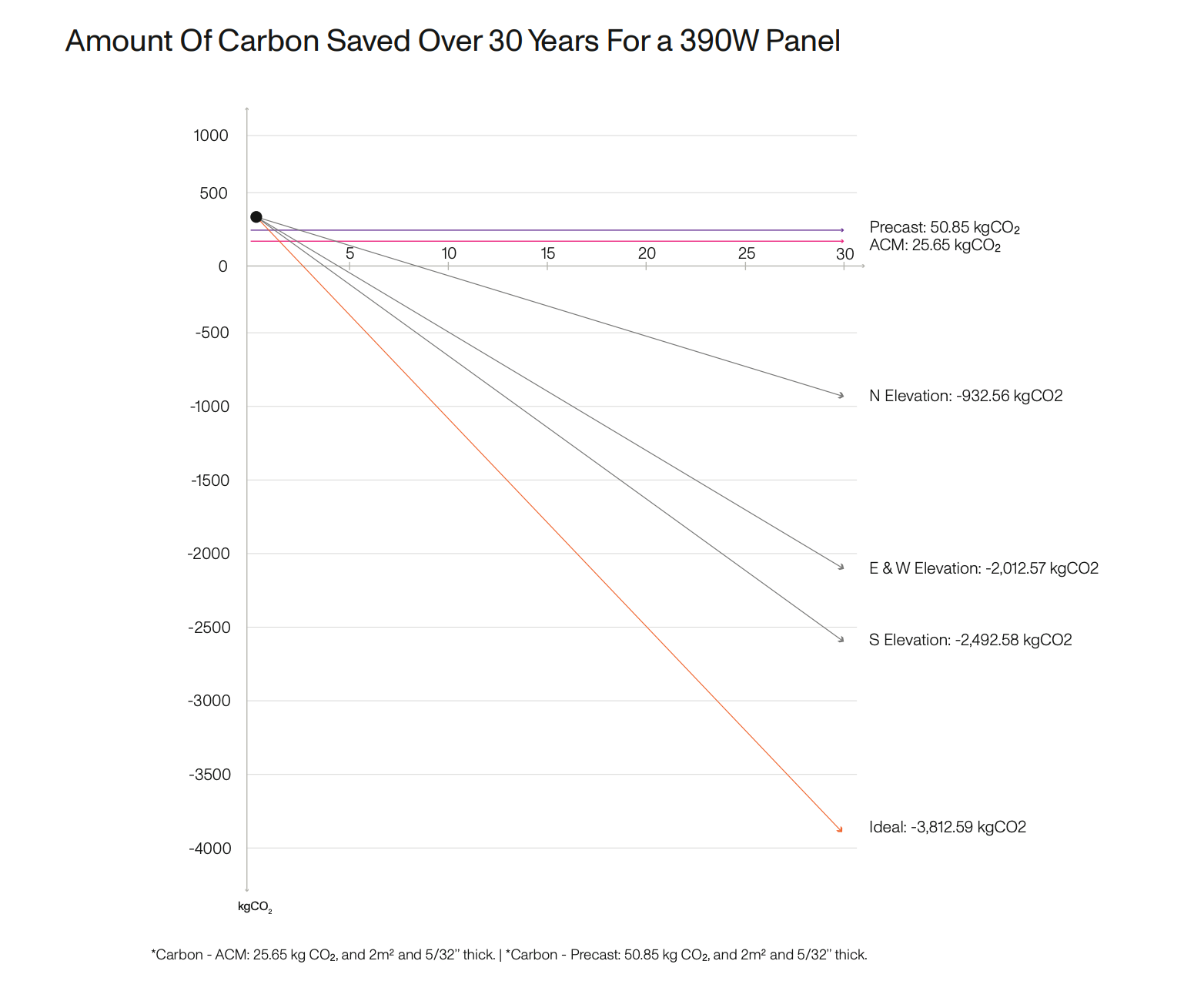
August 27, 2025

Sustainability is no longer a bonus — it’s a baseline. Developers and architects are expected to deliver not just striking buildings, but also low-carbon, high-performance structures that meet evolving codes and expectations.
Mitrex building-integrated photovoltaics (BIPV) offer a solution that goes beyond emissions reduction — turning the building envelope itself into an energy-generating tool that actively reduces operational and embodied carbon while maintaining design integrity.
Traditional cladding simply covers a building, adding embodied carbon with no return. Mitrex transforms that facade into an active, energy-generating system that begins offsetting carbon from day one.
In ideal conditions, a section of Mitrex facade can offset up to 3.8 tonnes of CO₂ over 30 years — compared to materials like precast concrete or aluminum composite, which emit carbon during production and never repay that debt.
By integrating energy generation into the building’s vertical surfaces, developers avoid using valuable rooftop space and instead tap into underutilized real estate for climate action — seamlessly and efficiently.

In cities like Toronto, New York, and Chicago — where rooftops are limited and regulations like NYC’s Local Law 97 and Chicago’s CAP 2.0 enforce emissions reductions — vertical solar-integrated facades are no longer optional.
Recent projects such as a university health sciences building in Toronto, a hospital in Alberta, and a residential tower in Edmonton demonstrate how Mitrex BIPV helps meet carbon reduction targets without sacrificing design or exceeding budgets — setting new benchmarks for sustainable construction.
Mitrex systems support key green building certifications, including LEED, WELL, BOMA BEST, and Passive House.
Because they function as both cladding and renewable energy generation, Mitrex solutions help project teams earn credits in categories like renewable energy, envelope performance, and material transparency — all consolidated into a single, visually appealing solution.
Mitrex systems are tested and certified under UL 61730, UL 790, and Miami-Dade NOA, ensuring they perform reliably under fire, wind, and structural stresses. They deliver decades of clean energy with minimal maintenance, continually offsetting operational carbon and lowering lifetime building emissions.
Whether applied to a residential tower in Edmonton, a hospital in Alberta, or a campus retrofit in Halifax, Mitrex systems adapt to both climate and culture. The same technology performing in Canadian winters is also powering projects in Dubai’s heat — proving its performance in any context.
Explore how Mitrex can support the sustainability goals of your next project:
Contact Our Team
News & Articles